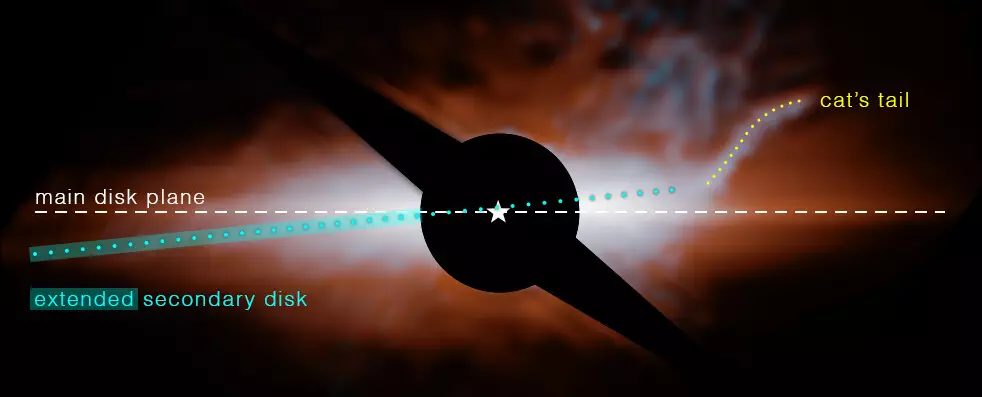Beta Pictoris, a well-known star in the southern constellation Pictor, has captivated astronomers for years. Despite being extensively studied and imaged, new advancements in telescope technology have revealed previously unseen features, challenging our understanding of this celestial body. In this article, we delve into the surprises discovered by the James Webb Space Telescope (JWST) and discuss their implications.
Beta Pictoris is a young star, estimated to be around 20 million years old, and located just 63 light-years away from Earth. In 1984, initial observations unveiled an astonishing dust disk surrounding the star, from which planets were forming. Over time, the European Southern Observatory confirmed the existence of two planets, creatively named Beta Pictoris b and Beta Pictoris c, orbiting within this disk.
An Unexpected Structure
Despite the wealth of previous observations, the JWST’s Near-Infrared Camera (NIRI) and Mid-Infrared Instrument (MIRI) revealed a surprising new structure within the secondary disk of Beta Pictoris. Led by Isabel Rebollido from the Astrobiology Center in Spain, the research team identified a tail-like appendage, aptly described as the “Cat’s Tail.” This feature displayed a distinct angular orientation to the secondary disk, offering a deeper insight into the complexity of this system.
Analysis of the MIRI data further unveiled another unexpected revelation – the secondary disk and the Cat’s Tail exhibited higher temperatures than the main disk. This disparity in temperature strongly suggests that these components are composed of different materials. Unlike the main disk, which has previously been observed in visible and near-infrared light, the secondary disk and the Cat’s Tail only appear bright under mid-infrared wavelengths. This points to the possibility that they are made of darker, more porous materials reminiscent of those found on comets and asteroids.
While the nature of the dust composition is relatively straightforward to address, explaining the origin and formation of the Cat’s Tail presents a greater challenge. The research team explored various hypotheses to account for its distinctive shape but ultimately found no conclusive model. One prevailing theory suggests that the tail may have formed as a result of a collision within the disk approximately a hundred years ago. This collision could have redirected the dust, causing it to follow a trajectory that mimics that of the impactor, eventually spreading out to produce the curved shape observed. The angle of the tail from our vantage point may also contribute to the perception of its steepness.
The recent observations of Beta Pictoris have undoubtedly shed light on previously unknown aspects of this celestial object. However, many questions remain unanswered. Further research and analysis utilizing the capabilities of the JWST and future observational tools will be vital in unraveling the full extent of these new features. This discovery serves as a reminder that even familiar astronomical entities can harbor surprises and mysteries waiting to be unlocked.
Beta Pictoris, a star widely studied and imaged, continues to astound astronomers with its revelations. From its remarkable dust disk to the unforeseen Cat’s Tail, this celestial body challenges our understanding and ignites our curiosity. As we continue to peel back the layers of this cosmic enigma, we are left pondering what other familiar objects in our universe may still hold awe-inspiring surprises waiting to be discovered.



Leave a Reply